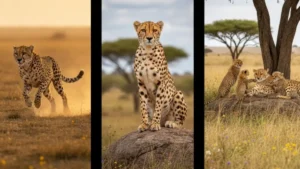May 3, 2025, marks the observance of World Press Freedom Day, a globally recognized occasion that honors the critical role of a free, independent, and pluralistic media in a democratic society. Celebrated annually since 1993, the day highlights the growing challenges faced by journalists worldwide—from censorship to violence—and calls on governments, civil society, and citizens to protect press freedom as a fundamental human right. The occasion emphasizes the public’s right to accurate information and the vital role journalists play in upholding transparency, accountability, and democracy.
Why in News?
World Press Freedom Day 2025 is being observed globally on May 3, with renewed calls to protect journalists from increasing threats and reaffirm the importance of independent journalism amid rising disinformation and digital surveillance.
Background
- Established: By the United Nations General Assembly in 1993.
- Inspired by: The Windhoek Declaration (1991), Namibia.
- Organized by: UNESCO annually.
- Observed on: May 3rd every year.
- Focus (2025): Journalistic safety, access to accurate information, and countering misinformation as theme
Background & Objectives
- The Windhoek Declaration of 1991 advocated for a free, independent, and pluralistic press and inspired the UN’s decision to designate May 3 as World Press Freedom Day.
Objectives of the day include,
- Promoting and defending press freedom.
- Honoring journalists working in dangerous conditions.
- Raising awareness about threats like harassment, imprisonment, and violence.
- Encouraging ethical journalism and public media literacy.
Significance in 2025
- Reinforces the need for transparent governance and an informed citizenry.
- Highlights how digital disinformation and AI-generated content pose new challenges to authentic journalism.
- Emphasizes the role of media literacy in the public.
- Pays tribute to journalists who lost their lives in the line of duty.
- Encourages collaboration between governments, civil society, and international bodies to ensure media safety.
| Summary/Static | Details |
| Why in the news? | World Press Freedom Day 2025 |
| First Observed | 1993 |
| Declared By | United Nations General Assembly |
| Annual Organizer | UNESCO |
| Based on | Windhoek Declaration, Namibia (1991) |
| Related Rights | Article 19, UDHR & ICCPR – Freedom of Expression |
| Objective | Promote press freedom, protect journalists, combat misinformation |
| Significance | Essential for democracy, transparency, and informed public discourse |




 International Volunteer Day 2025: “Every...
International Volunteer Day 2025: “Every...
 World Soil Day 2025: Focusing on "Health...
World Soil Day 2025: Focusing on "Health...
 International Cheetah Day 2025: India’s ...
International Cheetah Day 2025: India’s ...







